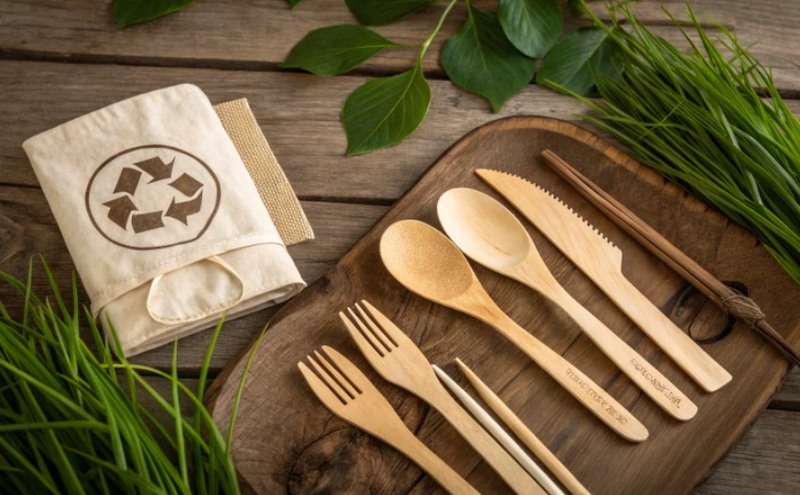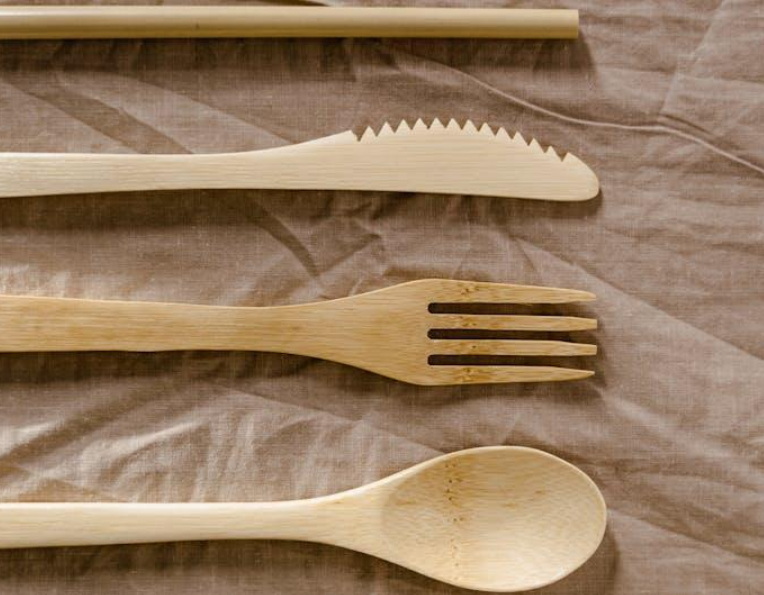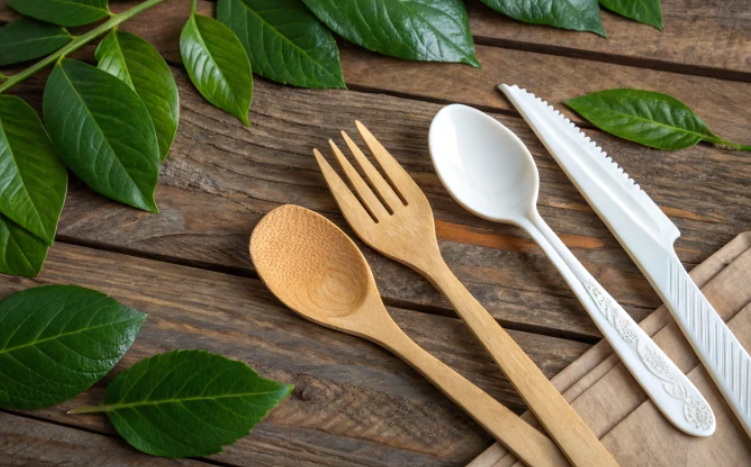
Content Menu
● Introduction to Wooden Cutlery Disposable
>> Benefits of Wooden Cutlery Disposable
● Disposal Methods for Wooden Cutlery Disposable
>> Composting
>>> Steps for Composting Wooden Cutlery:
>> Recycling
>>> Steps for Recycling Wooden Cutlery:
>> Landfill Disposal
● Eco-Friendly Practices for Wooden Cutlery Disposable
>> Choosing the Right Materials
>> Reducing Waste
>> Promoting Sustainable Practices
● Challenges and Opportunities
● Impact on Local Communities
● Educational Initiatives
● Conclusion
● FAQ
>> 1. What is the best way to dispose of wooden cutlery?
>> 2. Can all types of wooden cutlery be composted?
>> 3. How do I recycle wooden cutlery?
>> 4. What are the benefits of using wooden cutlery disposable?
>> 5. Can wooden cutlery be disposed of in landfills?
In recent years, the use of wooden cutlery disposable has become increasingly popular as an eco-friendly alternative to traditional plastic utensils. This shift towards sustainability is driven by the need to reduce plastic waste and minimize environmental impact. However, the proper disposal of wooden cutlery remains a topic of interest for many consumers and businesses. In this article, we will explore the best practices for disposing of wooden cutlery, including recycling, composting, and other eco-friendly methods.

Introduction to Wooden Cutlery Disposable
Wooden cutlery disposable is made from renewable resources such as birch and bamboo, making it biodegradable and compostable. This characteristic allows it to break down naturally without leaving harmful residues, unlike plastic cutlery which can take hundreds of years to decompose.
Benefits of Wooden Cutlery Disposable
1. Environmental Sustainability: Wooden cutlery is produced from sustainable forests, ensuring that its use supports responsible forestry practices rather than contributing to deforestation.
2. Biodegradability: It can be composted, reducing landfill waste and contributing to nutrient-rich soil.
3. Energy Efficiency: The production process requires less energy compared to plastic, resulting in fewer greenhouse gas emissions.
Disposal Methods for Wooden Cutlery Disposable
Composting
Composting is one of the most effective ways to dispose of wooden cutlery disposable. This process involves breaking down organic materials into nutrient-rich soil that can be used in gardening. For optimal composting, it's essential to remove any food residue from the cutlery before adding it to the compost pile.
Steps for Composting Wooden Cutlery:
1. Remove Food Residue: Clean the cutlery to prevent attracting pests and ensure efficient decomposition.
2. Add to Compost Pile: Mix the cleaned wooden cutlery with other compost materials like leaves or vegetable scraps.
3. Maintain Moisture: Keep the compost pile moist but not soggy to facilitate decomposition.
Recycling
While not all types of wooden cutlery can be recycled, untreated wood without chemical coatings can be processed in specialized facilities. It's crucial to check local recycling guidelines for specific instructions on handling wooden waste.
Steps for Recycling Wooden Cutlery:
1. Separate from Other Waste: Keep wooden cutlery separate from metal, plastic, and other non-recyclable materials.
2. Clean Before Recycling: Remove any food residue and lightly rinse if necessary.
3. Use Local Recycling Facilities: Consult local waste management for drop-off centers or curbside collection options.
Landfill Disposal
If neither composting nor recycling is feasible, wooden cutlery disposable can still be disposed of in landfills. Although this is less ideal, wood will eventually degrade, albeit more slowly than in a composting environment.

Eco-Friendly Practices for Wooden Cutlery Disposable
Choosing the Right Materials
When selecting wooden cutlery disposable, opt for products made from untreated, natural wood. This ensures that the cutlery can be composted or recycled without contaminating other materials.
Reducing Waste
Using wooden cutlery disposable reduces water and energy consumption since it requires no washing or extensive cleanup after use. Additionally, choosing wooden cutlery over plastic can significantly reduce the amount of plastic waste in oceans and landfills.
Promoting Sustainable Practices
Businesses and individuals can promote sustainable practices by adopting wooden cutlery disposable in their daily operations. This not only contributes to environmental conservation but also sets a positive example for others to follow.
Challenges and Opportunities
Despite the benefits of wooden cutlery disposable, there are challenges associated with its widespread adoption. One of the main challenges is the higher cost compared to plastic cutlery. However, as demand increases and production scales up, prices are likely to decrease, making it more accessible to consumers.
Another opportunity lies in innovation. Companies are continually developing new technologies to improve the durability and affordability of wooden cutlery, making it a more viable option for both businesses and consumers.
Impact on Local Communities
The shift towards wooden cutlery disposable can have a positive impact on local communities. By supporting sustainable forestry practices, communities can benefit from job creation and economic growth in the forestry sector. Additionally, reducing plastic waste helps maintain cleaner environments, which is essential for public health and well-being.
Educational Initiatives
Educating consumers about the benefits and proper disposal methods of wooden cutlery disposable is crucial for maximizing its environmental benefits. Schools and community centers can play a significant role by incorporating environmental education into their curricula and organizing workshops on sustainable living practices.
Conclusion
Proper disposal of wooden cutlery disposable is crucial for maintaining its eco-friendly benefits. By composting or recycling, consumers can significantly reduce waste and support sustainable practices. As awareness about environmental sustainability grows, the demand for eco-friendly alternatives like wooden cutlery will continue to rise. It is essential for individuals and businesses to adopt these practices and contribute to a cleaner, healthier environment.

FAQ
1. What is the best way to dispose of wooden cutlery?
The best way to dispose of wooden cutlery is through composting, as it allows the material to break down naturally and contribute to nutrient-rich soil.
2. Can all types of wooden cutlery be composted?
Not all types of wooden cutlery can be composted. It's essential to ensure that the cutlery is made from untreated, natural wood without chemical coatings.
3. How do I recycle wooden cutlery?
To recycle wooden cutlery, separate it from other waste, clean it thoroughly, and use local recycling facilities that accept wood waste.
4. What are the benefits of using wooden cutlery disposable?
The benefits include being biodegradable, compostable, and made from renewable resources, which reduces landfill waste and supports sustainable forestry practices.
5. Can wooden cutlery be disposed of in landfills?
Yes, wooden cutlery can be disposed of in landfills if composting or recycling is not available. However, this is less ideal as it takes longer to degrade.

















